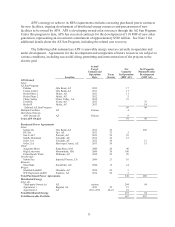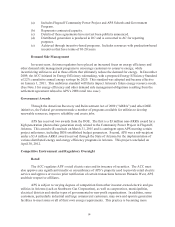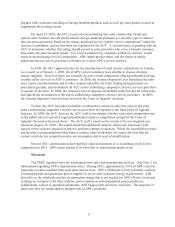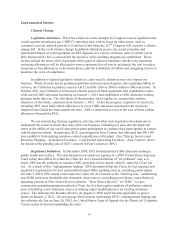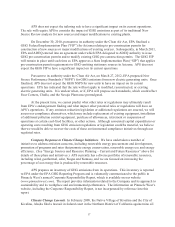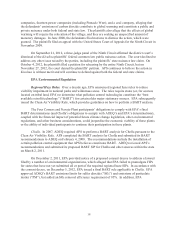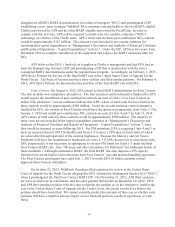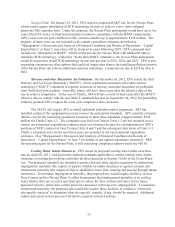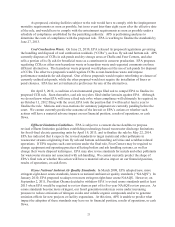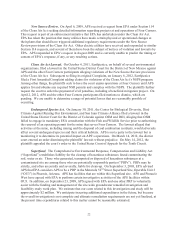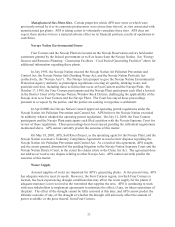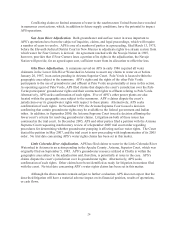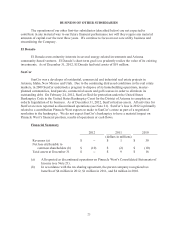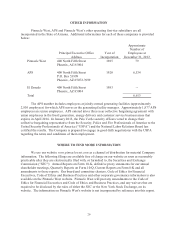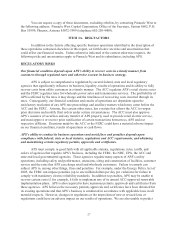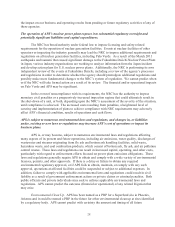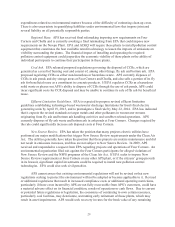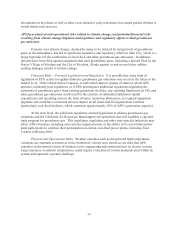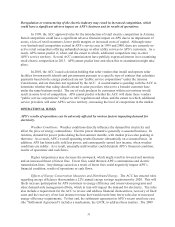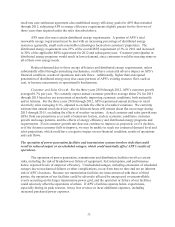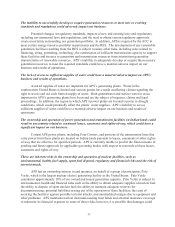APS 2012 Annual Report Download - page 47
Download and view the complete annual report
Please find page 47 of the 2012 APS annual report below. You can navigate through the pages in the report by either clicking on the pages listed below, or by using the keyword search tool below to find specific information within the annual report.23
Manufactured Gas Plant Sites. Certain properties which APS now owns or which were
previously owned by it or its corporate predecessors were at one time sites of, or sites associated with,
manufactured gas plants. APS is taking action to voluntarily remediate these sites. APS does not
expect these matters to have a material adverse effect on its financial position, results of operations or
cash flows.
Navajo Nation Environmental Issues
Four Corners and the Navajo Plant are located on the Navajo Reservation and are held under
easements granted by the federal government as well as leases from the Navajo Nation. See “Energy
Sources and Resource Planning – Generation Facilities – Coal-Fueled Generating Facilities” above for
additional information regarding these plants.
In July 1995, the Navajo Nation enacted the Navajo Nation Air Pollution Prevention and
Control Act, the Navajo Nation Safe Drinking Water Act, and the Navajo Nation Pesticide Act
(collectively, the “Navajo Acts”). The Navajo Acts purport to give the Navajo Nation Environmental
Protection Agency authority to promulgate regulations covering air quality, drinking water, and
pesticide activities, including those activities that occur at Four Corners and the Navajo Plant. On
October 17, 1995, the Four Corners participants and the Navajo Plant participants each filed a lawsuit
in the District Court of the Navajo Nation, Window Rock District, challenging the applicability of the
Navajo Acts as to Four Corners and the Navajo Plant. The Court has stayed these proceedings
pursuant to a request by the parties, and the parties are seeking to negotiate a settlement.
In April 2000, the Navajo Nation Council approved operating permit regulations under the
Navajo Nation Air Pollution Prevention and Control Act. APS believes the Navajo Nation exceeded
its authority when it adopted the operating permit regulations. On July 12, 2000, the Four Corners
participants and the Navajo Plant participants each filed a petition with the Navajo Supreme Court for
review of these regulations. Those proceedings have been stayed, pending the settlement negotiations
mentioned above. APS cannot currently predict the outcome of this matter.
On May 18, 2005, APS, Salt River Project, as the operating agent for the Navajo Plant, and the
Navajo Nation executed a Voluntary Compliance Agreement to resolve their disputes regarding the
Navajo Nation Air Pollution Prevention and Control Act. As a result of this agreement, APS sought,
and the courts granted, dismissal of the pending litigation in the Navajo Nation Supreme Court and the
Navajo Nation District Court, to the extent the claims relate to the Clean Air Act. The agreement does
not address or resolve any dispute relating to other Navajo Acts. APS cannot currently predict the
outcome of this matter.
Water Supply
Assured supplies of water are important for APS’s generating plants. At the present time, APS
has adequate water to meet its needs. However, the Four Corners region, in which Four Corners is
located, has been experiencing drought conditions that may affect the water supply for the plants if
adequate moisture is not received in the watershed that supplies the area. APS is continuing to work
with area stakeholders to implement agreements to minimize the effect, if any, on future operations of
the plant. The effect of the drought cannot be fully assessed at this time, and APS cannot predict the
ultimate outcome, if any, of the drought or whether the drought will adversely affect the amount of
power available, or the price thereof, from Four Corners.


